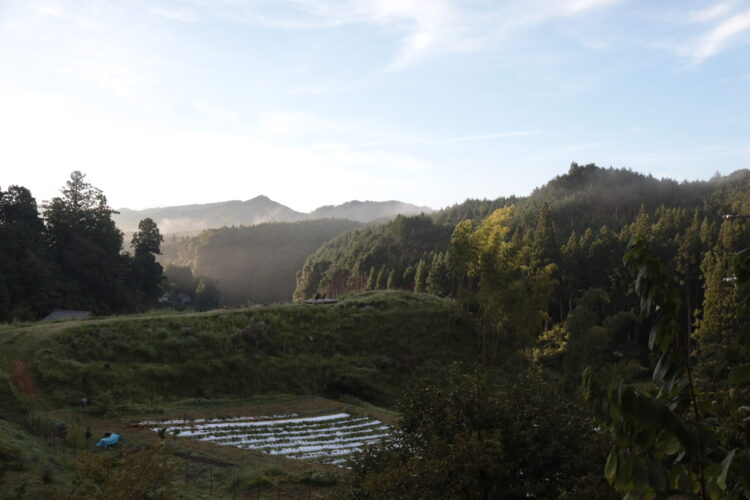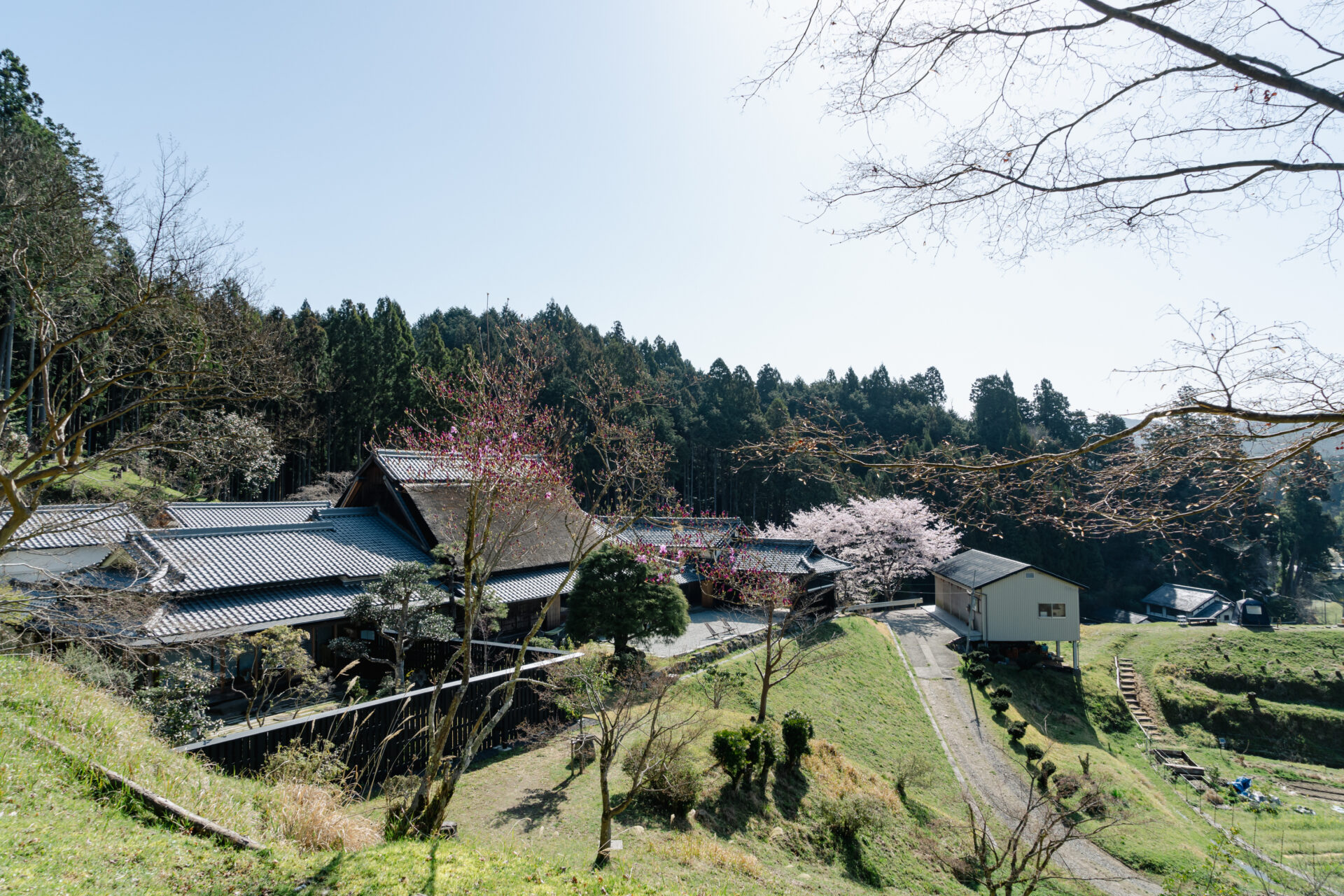Surrounding Area: History
English

You do not need to go far from Yatakiya to find history. Haibara Station, the closest station to Yatakiya, is located on the Ise-Honkaido, the traditional pilgrimage route from Osaka to Ise-Jingu Shrine; leaving the station, you will pass Sumisaka Shrine, the oldest shrine in Japan to be dedicated to the deity of health. As you drive up to Yatakiya, you can see the old pilgrimage roads disappearing into the forest. A 15-minute walk away from Yatakiya itself, down the slope past the yamatotouki field and back up along a forest road, you come to the tomb of Fuminonemaro, a seventh-century military vassal.

Looking further afield, Uda teems with temples and shrines, testament to the deep spiritual history of the area. For tea lovers, one particular recommendation is Butsuryu-Ji Temple, said to be the first place where Yamato tea seeds were planted, brought by a monk returning from China in 806 BC. Wild tea shrubs still grow around the temple, where one can soak in the impressive history of Yamato tea (Nara’s local variety).
Elsewhere, other remarkable histories can be found in Murou-Ji Temple, perhaps the most spectacular of the nearby temples. Famed for a pagoda that becomes surrounded with blooming rhododendrons in spring, it houses an impressive collection of Buddha statues, three of which are classed as national treasures, and a further six as important cultural properties. It is also notable for having welcomed women from the time of its building in the ninth century, unlike the vast majority of temples.

Provided by Uda City
In nearby Ouda, you can find an archaeological site where Uda-Matsuyama Castle once stood. Although the castle itself is no longer visible, the historical atmosphere of this castle town remains; amongst the most popular attractions is an enormous 300-year old cherry tree, the matabei-zakura. Below the castle ruins, you can find a remarkably well-preserved collection of historical buildings, laid out in low streets that feel like something straight out of the Edo period (16th-18th century Japan). Uda has a long-standing association with health and medicine, and this can certainly be felt in this historic townscape: the aforementioned Morino Medicinal Herb Garden is located here, as is Kusuri-no-Yakata, a historical museum of medicine.
In health, religion, and culture alike, the depth of Japan’s history can be felt strongly in the area around Yatakiya. Indeed, even on returning after a day out to Yatakiya itself, you can feel the stories of the past as you glance up at the thatched roof before stepping into the renovated 300-year old farmhouse, ready for a well-earned rest.
>> BOOK NOW <<
★Surrounding Area: History
Surrounding Area: Community and Culture
This text is written by Gabriela Mancey-Jones who is studying in Japan at the invitation of the Daiwa Anglo-Japanese Foundation, through interviews conducted in February 2024. She is looking to specialize in cultural anthropology with a Japan focus.